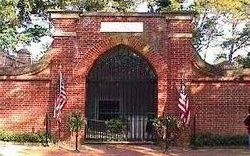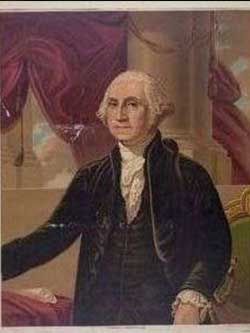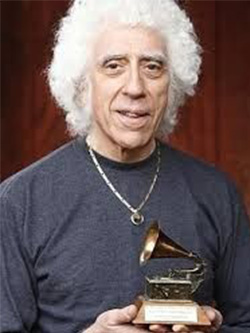Find a Grave George Washington (1732-1799)
George Washington
Birth 22 Feb 1732
Westmoreland County, Virginia, USA
Death 14 Dec 1799 (aged 67)
Mount Vernon, Fairfax County, Virginia, USA
Burial
Mount Vernon Estate
Mount Vernon, Fairfax County, Virginia, USA Show Map
PLOT Mount Vernon, New Tomb
1st United States President
First United States President, Revolutionary War Continental General. George Washington earned the title, ‘Father of His Country.’ Before the Revolutionary War, there had been thirteen separate colonies, each with its own government. A war had forced them to fight as a single nation. A convention in Philadelphia with representatives from each formed a new independent nation. To the man who stood by and led a ragtag army, helped write the Constitution, worked to have it accepted, was then elected to be its first President.
George Washington Grave Site
George Washington was born at Wakefield, the family plantation in Westmoreland County, Virginia to Augustine and Mary Ball Washington. His father was a tobacco farmer and died when George was eleven. He then lived with his half brother who owned Mt. Vernon inheriting the property upon his death. He had no formal education but became a self learned surveyor at an early age. The French began to encroach on Virginia land and he was appointed a major in the militia and defended against the French at Fort Necessity.

Although defeated, he gained valuable lessons in warfare. He was elected to the Virginia House of Burgesses and the issue of the time was growing resentment to unfair taxation and economic policies from England. Elected as a delegate to both the First and Second Continental Congresses and with sympathy toward severing ties with Great Britain, was given command of a new but ill equipped army.
Where Was George Washington born?
He accepted his new duties at Cambridge, Massachusetts, and embarked upon a war that was to last six grueling years with a strategy of hit and run. Successful at driving the British from Boston, he was badly defeated in New York but led his army through New Jersey across the Delaware River to safety in Pennsylvania. His troops were discouraged and many deserted. He re crossed the Delaware River near Trenton capturing a thousand Hessian mercenaries serving in the British army. However, the British were victorious again driving the Americans from Philadelphia. A winter camp at Valley Forge was the defining period in the struggle for independence.
The men suffered: food was in short supply, improper clothing led to frozen feet and death. Martha was there beside her husband giving them soup, medicine and clothes she obtained from personal relief efforts. The battle of Saratoga was the turning point. Washington’s military tactics confounded the British. France decided to send ships, men and money which led to the victory at Yorktown, Virginia where British troops commanded by General Cornwallis were surrounded by the French and Americans and forced to surrender. The war was over, independence achieved, a peace treaty signed and Washington said farewell to his soldiers and returned to Mount Vernon.
Where is George Washington buried?
However, he was a delegate to the convention which formed the new nation and wrote the new constitution which rewarded him by election as the first President. He took the oath of office in New York City and the first order of business was to appoint the ablest men of his time to help him. The first cabinet was born: Alexander Hamilton-Secretary of the Treasury, Thomas Jefferson-Secretary of State, Henry Knox- Secretary of War and Samuel Osgood -Postmaster General. He appointed the first ten Justices to the Supreme Court.
Julie Strain (1962-2021)
In 1791 a federal territory was established as the site of the new nation’s permanent capital and Pierre Charles L’Enfant was named architect in charge of plans for the new federal city. President Washington laid the cornerstone in 1793 for the Capitol building. The site was named Washington in his honor when becoming the nations capitol in 1800. He served two terms, turning down a third, returning home to Mount Vernon.
Washington enjoyed less than three years of retirement. After spending a day riding on his farms in foul weather, his throat became inflamed developing into what today is called acute inflammatory edema. The first President was dead at age 67.
His body was brought downstairs and kept for three days to be certain he was indeed dead. Washington was interred as he wished at Mt Vernon in a hastily constructed brick crypt. Prior to interment, an elaborate funeral service was conducted. Martha sat beside a second-floor window and watched the funeral on the lawn below. The service included cavalry, infantry, cannons, a riderless horse, solemn music and hundreds of mourners.
Finally a last passage was read from the Episcopal prayer book and the body was placed in the crypt. In two years, Martha joined him upon her death. A new mausoleum was constructed some thirty years later and both bodies were moved and placed in an inter wall. A move again from the inter wall of the tomb to the present anteroom where a marble white coffin shaped sarcophagus was constructed to contain the Presidents coffin. On his left, is Martha in a more simple sarcophagus. Both are visible from behind the high iron gates. Postscript: After his death, legends, paintings and books elevated him into an unbelievable legend (example cherry tree fable).
However, more meaningful monuments remain today. Towns, Cities, schools, and streets honor his name across America. The 550 foot tall marble obelisk which dominates the Washington skyline honors him. Construction of the Washington Monument began in 1848, stopped during the Civil War and was finished in 1884 George Washington was forgotten for a time and Mt Vernon fell into disrepair until the Mount Vernon Ladies Association was formed and instituted repair while taking on the task of its future care and preservation. The residence was constructed by Washington and it contains original furnishings and many artifacts owned by the famous couple.
The President owned many slaves and it bothered him that as leader of the revolution that had yielded the country liberty, many Americans remained in bondage. More than 300 slaves lived and worked on the Mount Vernon farms. By the terms of his will, he set his slaves free, arranging for the older ones to receive pensions. In 1983, the Ladies Association began the task of refurbishing the large neglected slave cemetery at the rear of the estate. No markers were ever placed as the slaves died. They have erected a monument noting this disservice and were able to emblazon on its surface a few known names.






